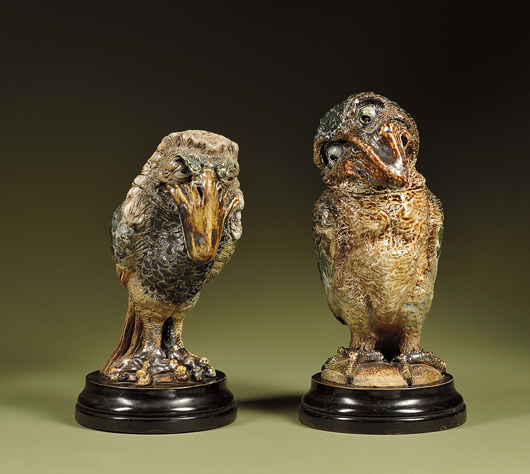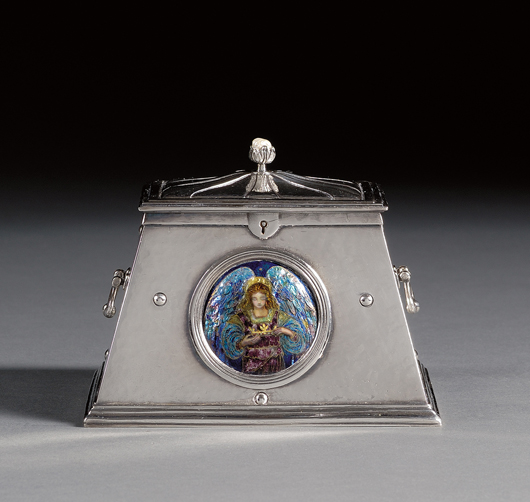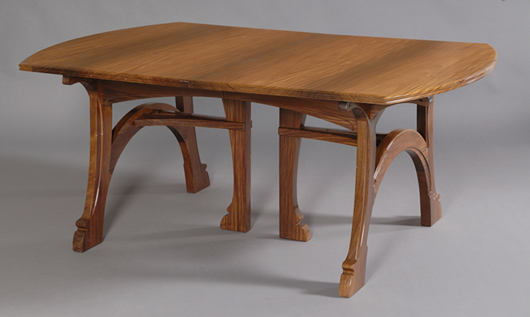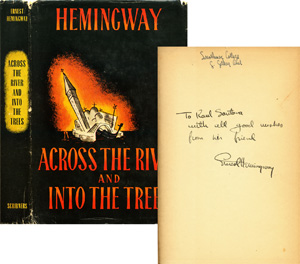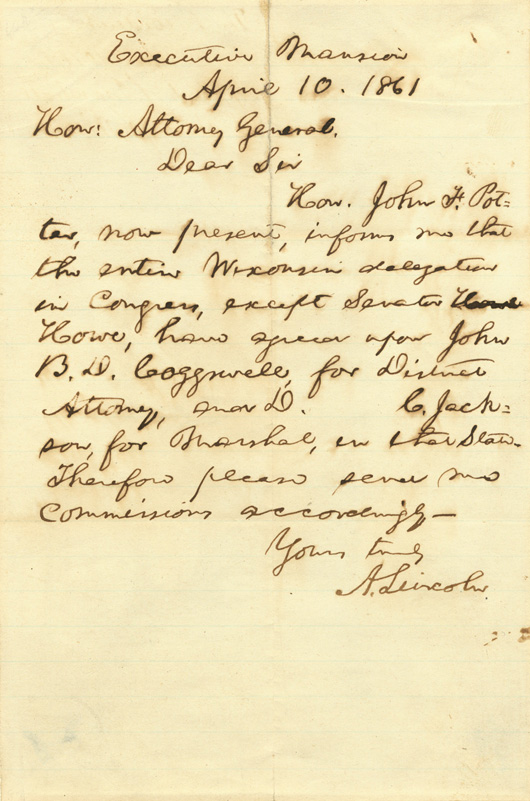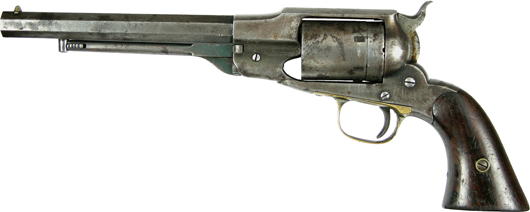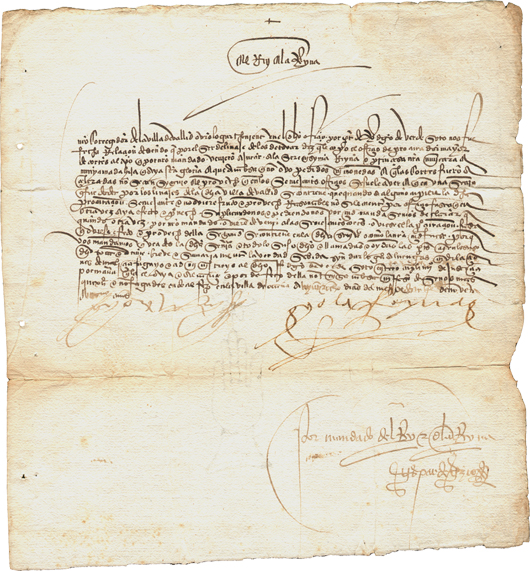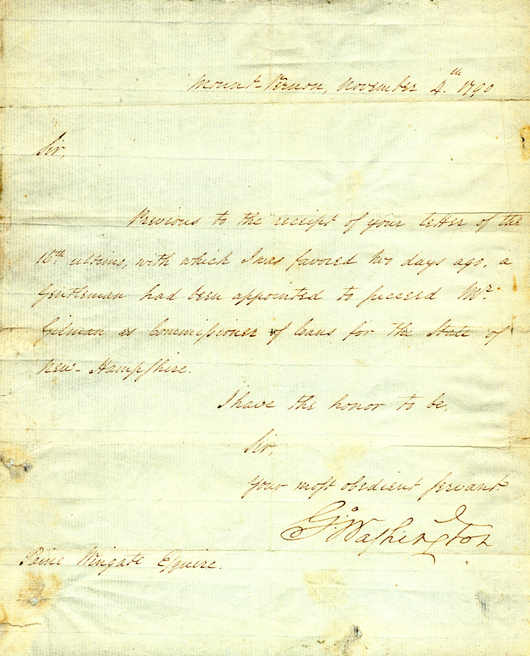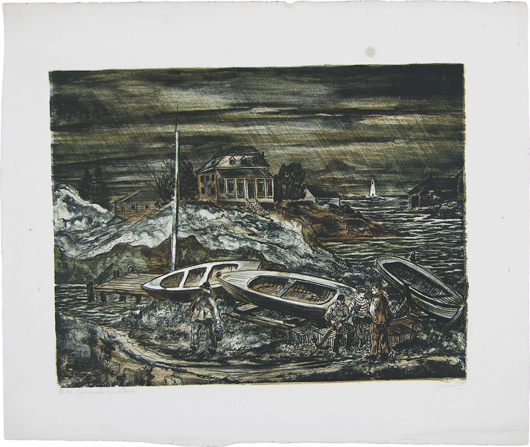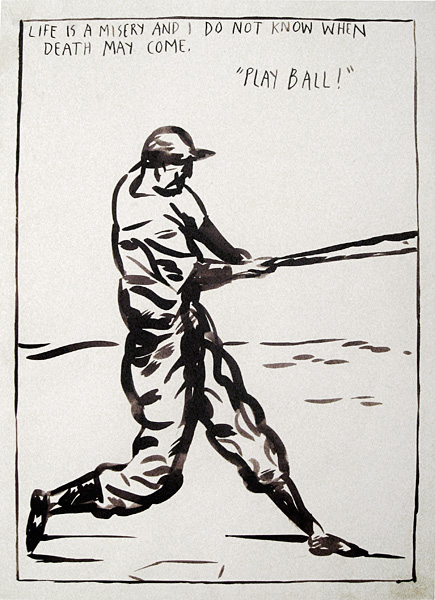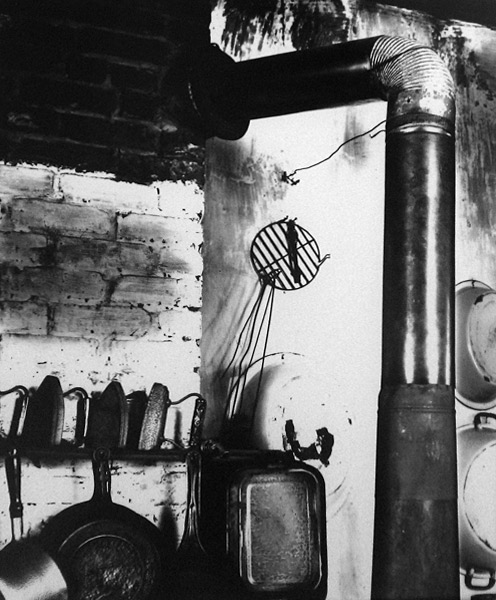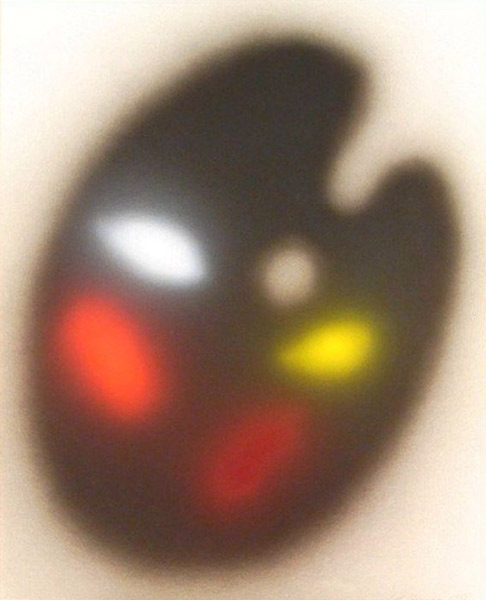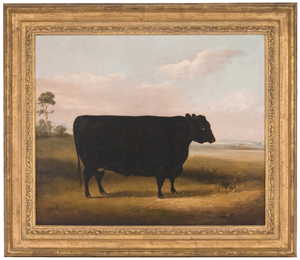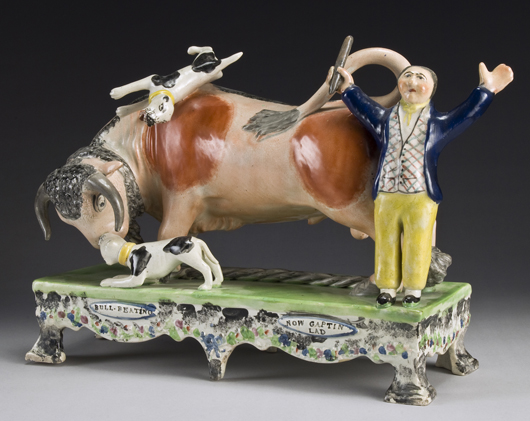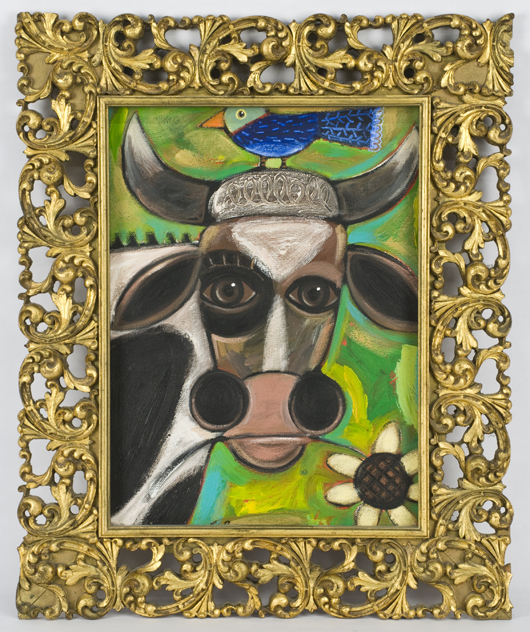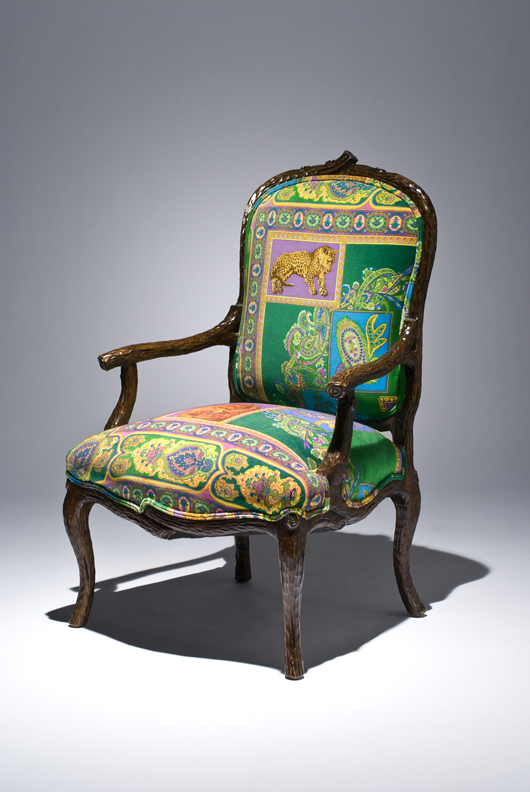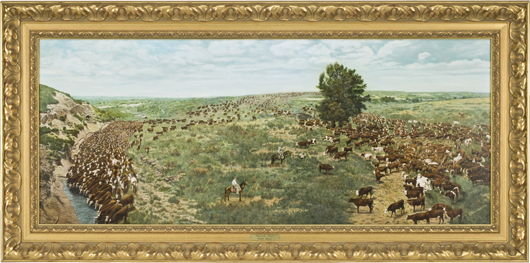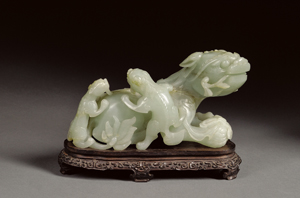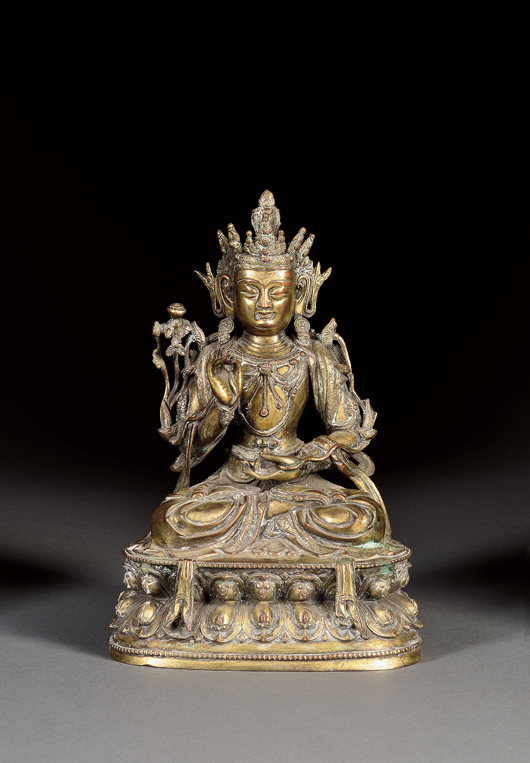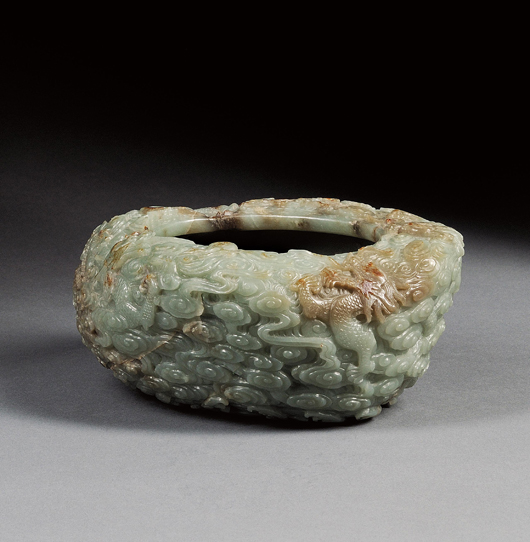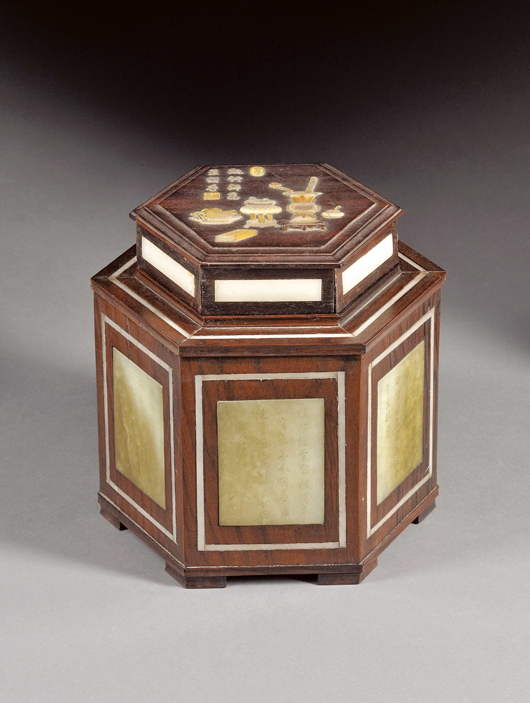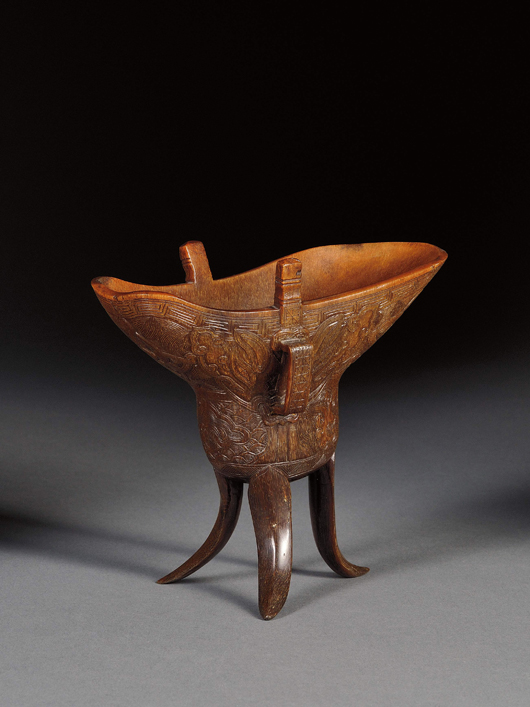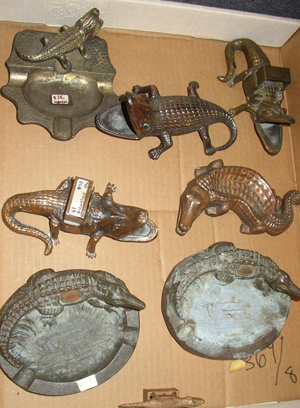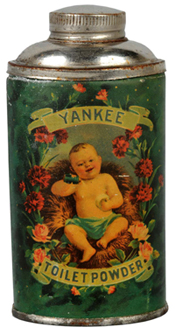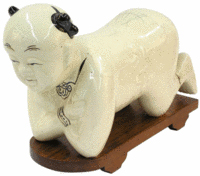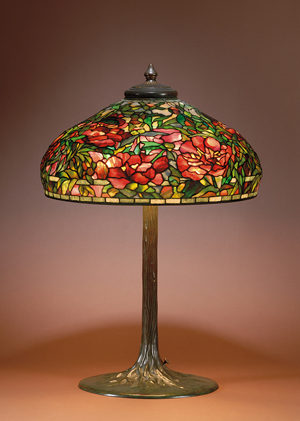
BOSTON – On Oct. 24, Skinner Inc. will auction part II of the Richard Wright Collection featuring decorative arts and furniture in sale to be conducted Oct. 24 at the company’s Boston gallery. Internet live bidding will be available through LiveAuctioneers.com.
The late Richard Wright was one of the world’s foremost experts on fine dolls, widely known for his authoritative appraisals on the PBS Television series Antiques Roadshow; but he also had a discerning eye for furniture and decorative arts. The collection to be auctioned on the 24th is representative of Wright’s ability to unearth the rare, the unique and the unusual. Among the offerings are Tiffany lamps, Art Nouveau and Arts & Crafts furniture and decorations; Art Deco porcelain and bronze figures; Aesthetic Movement articles, as well as important Martin Brothers and Doulton pottery.
According to Stuart Whitehurst, Director of the Wright Collection at Skinner and sale auctioneer, “This collection tells a very personal story about who Richard Wright was and what kinds of things inspired him. It clearly shows an individual collector’s eye at work. Each piece acquired by Richard was one step in a near lifelong journey of seeking out the fine, the fantastic, the fun, and the funky – the culmination of that journey is this amazing collection. “
The highlight of the auction is featured on the auction catalog’s cover: a Tiffany Studios leaded glass and bronze “Elaborate Peony” lampshade and base, circa 1910 (lot 307, est. $300/500,000). This particular pattern rarely surfaces at auction.
Also featured on the catalog’s cover is a star of the Art Deco bronzes, a large figure by Bruno Zach titled The Riding Crop (lot 85, est. $12/15,000.) This figure of an alluring, semi-clad woman holding a riding crop is a force with which to be reckoned with. At 33½ inches high, she represents the largest casting of this model that Zach produced.
Other important offerings include two large and whimsical Martin Brothers glazed stoneware “Wally-Bird” tobacco jars with covers (lot 151 and 152, est. $12/18,000 each). Twenty-four other lots by the eccentric and brilliantly talented brothers Martin are featured in the collection. Wright’s passion for late 19th/early 20th century British pottery is further displayed in more than 40 marquee lots of Doulton Lambeth pottery, presided over by a near-life-sized salt-glaze stoneware figure of a contemplative monkey by George Tinworth (lot 185, est. $3/5,000). Works by the Barlow sisters and other famous Doulton decorators enchant the eye with their skillful decoration of animals. Lot 517 is a pair of Doulton Lambeth blue and brown salt glaze mantel vases depicting frolicking cottontail rabbits (est. $1,2/1,800), while lot 39 is a Doulton Lambeth Faience hanging charger by Linnie Watt, depicting a scene of winsome children gathering wildflowers (est. $2/3,000).
Another stunning piece is a Louis-Ernest Barrias’ silver and ivory mounted figure of an allegorical maiden, “Nature,” uncovering herself before science (lot 356, est. $7/9,000). Made by the Susse Frères Foundry, circa 1893-1908, the work features a parcel-gilt silver body with carved ivory face, torso, and hands, and mounted with silver and lapis lazuli accents. A similar example is in the collection of the Walters Art Museum in Baltimore.
Other decorative arts of note that illustrate Wright’s keen and discerning eye include an Arts & Crafts enamel-mounted silverplate jewelry casket (lot 403, est. $3/5,000) by Ernestine Mills, an important figure in the British Arts & Crafts movement and a fervent political activist and suffragette; and a large Russian bronze figure of a bear attributed to Nicolai Liberich (lot 736, est. $10/15,000).
Also, included in Wright’s collection is a varied selection of fine art including a fabulous original Arthur Rackham watercolor of an illustration for John Milton’s Comus (lot 546, est. $20/30,000) depicting nubile dancing water nymphs.
The fine furniture selection includes several signed examples by star designers of the Art Nouveau period including works by Serrurier-Bovy, Gallé, and Majorelle. Works by these artists include a Gustave Serrurier-Bovy Art Nouveau padouk wood dining table with seven dining chairs (lot 282, est. $14/18,000), a Gallé mother-of-pearl and fruitwood two-drawer side table (lot 306, est. $6/8,000), and a Majorelle Art Nouveau fruitwood marquetry-inlaid walnut side table (lot 358, est. $2/3,000.)
Coming on the heels of the Richard Wright Collection, Session I: Rare & Important Dolls of October 10th, the sale of decorative arts and furniture will also offer a group of objects collaterally related to dolls, such as miniature furniture, porcelains and paintings depicting figures with dolls.
“We’ve enjoyed handling this diverse and impressive collection,” said Whitehurst. “From the sublime to the smile-inducing, this sale is sure to offer something for everyone.”
Skinner invites interested parties to join their specialists for a 6 p.m. gallery walk discussing some of the many highlights of the sale on Friday, Oct. 23, with a reception preceding at 5:30 p.m. To RSVP or to enquire about any item in the sale, call 617-350-5400.
# # #
ADDITIONAL LOTS OF NOTE
